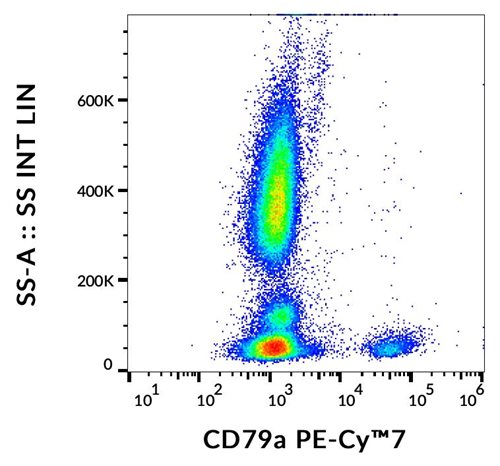Recombinant Mouse Kallikrein 7/KLK7 (C-6His)
Shipping Info:
For estimated delivery dates, please contact us at [email protected]
| Amount : | 50 µg |
| Content : | Lyophilized from a 0.2 µm filtered solution of 20mM HEPES,150mM NaCl,pH7.4. |
| Storage condition : | Lyophilized protein should be stored at -20°C, though stable at room temperature for 3 weeks. Reconstituted protein solution can be stored at 4-7°C for 2-7 days. Aliquots of reconstituted samples are stable at -20°C for 3 months. |
| AA sequence : | QGERIIDGYKCKEGSHPWQVALLKGNQLHCGGVLVDKYWVLTAAHCKMGQYQVQLGSDKIGDQSAQKIKATKSFRHPGYSTKTHVNDIMLVRLDEPVKMSSKVEAVQLPEHCEPPGTSCTVSGWGTTTSPDVTFPSDLMCSDVKLISSRECKKVYKDLLGKTMLCAGIPDSKTNTCNGDSGGPLVCNDTLQGLVSWGTYPCGQPNDPGVYTQVCKYKRWVMETMKTHRVDHHHHHH |
Source: Human Cells.
MW :26.1kD.
Recombinant Mouse Kallikrein 7 is produced by our Mammalian expression system and the target gene encoding Gln22-Arg249 is expressed with a 6His tag at the C-terminus. Kallikrein7, also named as stratum corneum chymotryptic enzyme (SCCE), is a secreted protein of the Kallikrein-related peptidase (KLK) family. This family contains fifteen homologous secreted serine endopeptidases and plays a significant role in various physiological processes, including skin desquamation, semen liquefaction, neural plasticity, and body fluid homeostasis. In skin KLK5, KLK 7 and KLK14 are able to degrade corneodesmosomes, which leads to desquamation of skin surface cells. KLK activation is believed to be mediated through highly organized proteolytic cascades, regulated through a series of feedback loops, inhibitors, auto-degradation and internal cleavages. Studies have shown that one potential physiological activator for KLK7 is KLK5. Along with KLK14, these three kallikreins form a proteolytic cascade in the stratum corneum. KLK7 is primarily expressed in the skin but is also detected at relatively high levels in esophagus, heart, liver, central nervous system, kidney, pancreas, mammary and salivary glands.
MW :26.1kD.
Recombinant Mouse Kallikrein 7 is produced by our Mammalian expression system and the target gene encoding Gln22-Arg249 is expressed with a 6His tag at the C-terminus. Kallikrein7, also named as stratum corneum chymotryptic enzyme (SCCE), is a secreted protein of the Kallikrein-related peptidase (KLK) family. This family contains fifteen homologous secreted serine endopeptidases and plays a significant role in various physiological processes, including skin desquamation, semen liquefaction, neural plasticity, and body fluid homeostasis. In skin KLK5, KLK 7 and KLK14 are able to degrade corneodesmosomes, which leads to desquamation of skin surface cells. KLK activation is believed to be mediated through highly organized proteolytic cascades, regulated through a series of feedback loops, inhibitors, auto-degradation and internal cleavages. Studies have shown that one potential physiological activator for KLK7 is KLK5. Along with KLK14, these three kallikreins form a proteolytic cascade in the stratum corneum. KLK7 is primarily expressed in the skin but is also detected at relatively high levels in esophagus, heart, liver, central nervous system, kidney, pancreas, mammary and salivary glands.
Endotoxin : Less than 0.1 ng/µg (1 IEU/µg) as determined by LAL test.
For Research Use Only. Not for use in diagnostic/therapeutics procedures.
| Subcellular location: | Secreted |
| Tissue Specificity: | Expressed in skin and, at lower levels, in lung, kidney, brain, heart and spleen. In skin, expressed in high suprabasal keratinocytes and in the luminal parts of hair follicles. Not detected in liver and skeletal muscle. |
|
There are currently no product reviews
|























.png)








